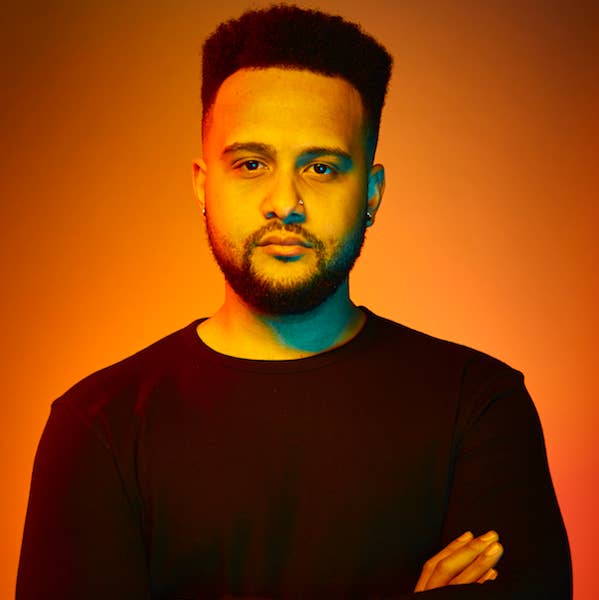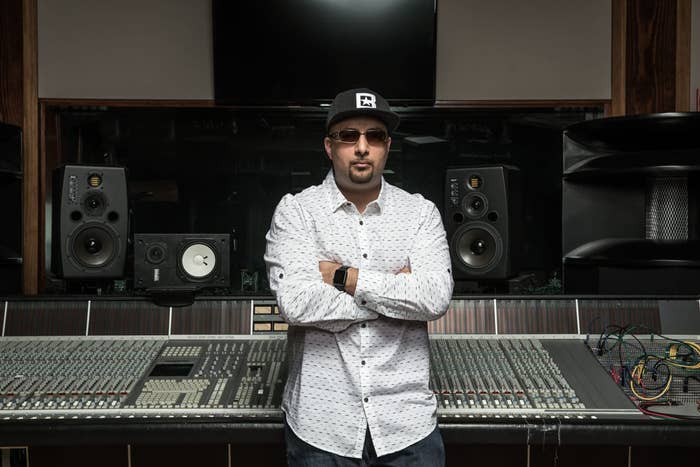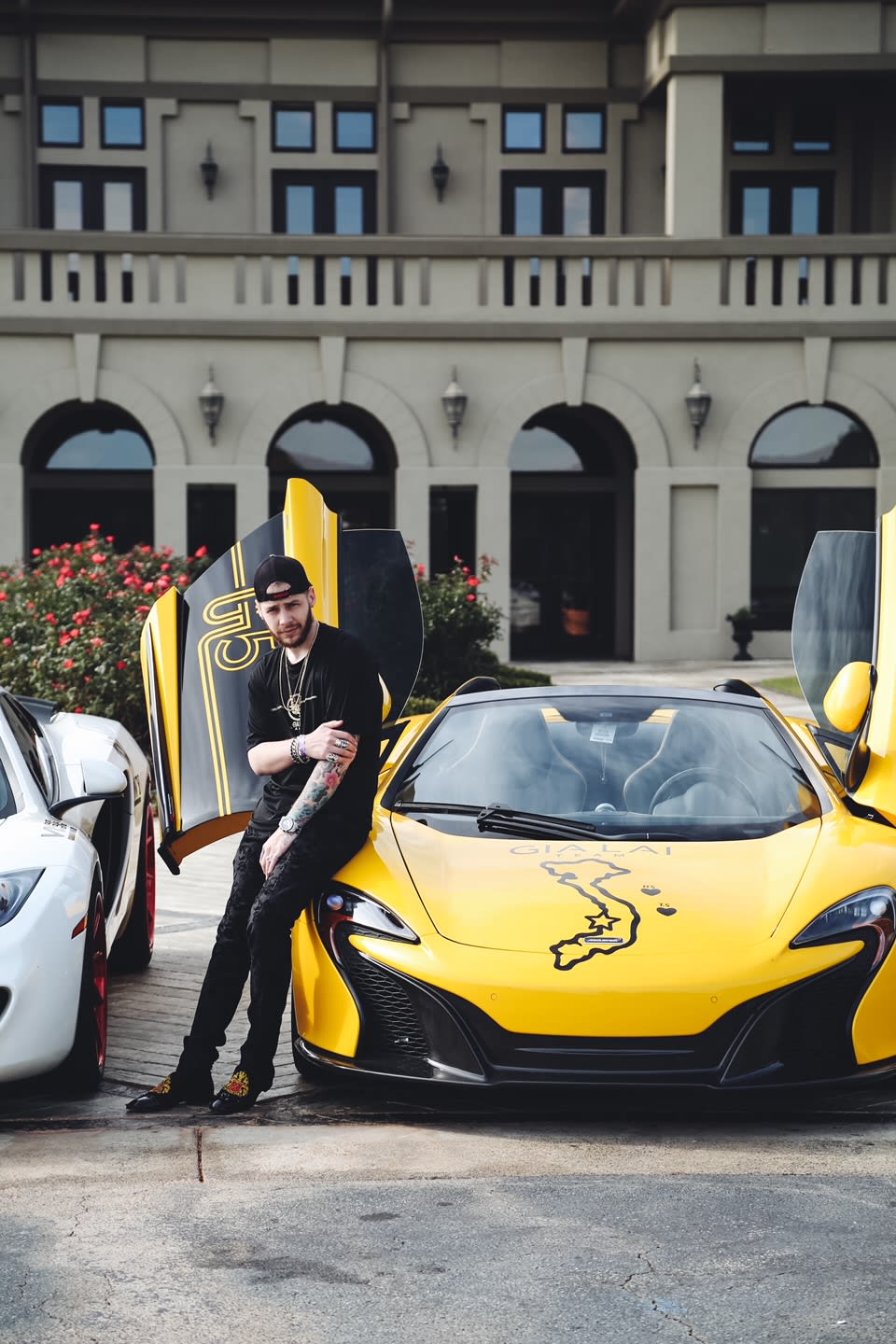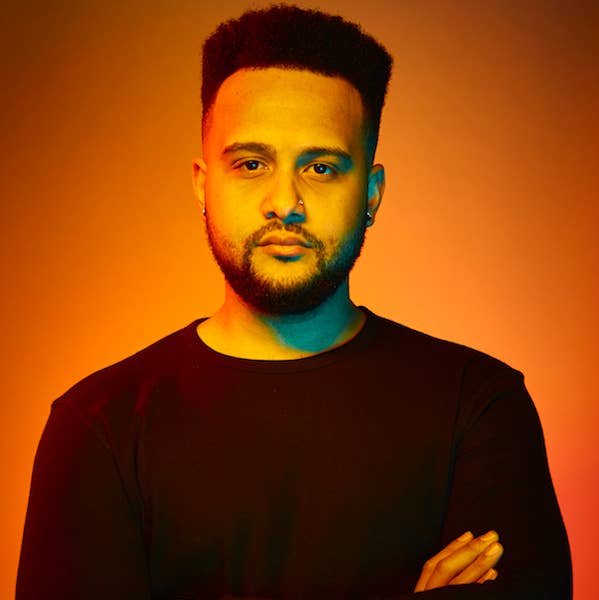
In 2011, Curtiss King should have been on top of the world. The producer, after working with successful rappers like Ab-Soul, had just placed a beat with two artists on Young Money. On top of that, XXL was writing about him.
To celebrate, he went to a liquor store near his Southern California home and grabbed a copy of the magazine. But when he got to the counter, there was a problem. He was broke.
“I couldn’t afford the magazine,” King tells Complex. “I show up to the register, like, ‘Hey, man, this is my name.’ He’s like, ‘Okay, sure dude.’”
King’s story gets to the heart of the problem with being a producer, even one who appears successful to the outside world: you’re often strapped for cash. Artists take a long time, if ever, to decide if they want to use one of the dozens of beats they often receive. From there, it’s a wait to see if you make the album. And from there, it can be up to a year until you actually get paid.
King needed a change. So in 2013, when his “life was in a really bad place,” a friend and mentor introduced him to an entirely different way to make money as a producer, one that is now reinventing how beatmakers get paid and how rappers find beats, and causing no shortage of controversy in the process. He started leasing beats.
Music-making duties in hip-hop have traditionally been divided evenly between the rapper and the producer when making an album. This was a division of labor that grew out of rap’s original DJ/rapper split, as memorialized in the title of the classic 1988 DJ Jazzy Jeff & the Fresh Prince album He’s the DJ, I’m the Rapper. At first, those pairs would work together exclusively to complete a project. But with the commercial and critical success of Nas’ 1994 debut Illmatic—which split beatmaking duties up between a dream team of L.E.S., Large Professor, Q-Tip, DJ Premier, and Pete Rock—the model of producer-as-freelancer, providing beats to different artists, began to take hold.
But with all of those changes, one thing still held true. Barring the occasional fiasco or outright bite, each beat would be teamed with only one song. The idea of someone like DJ Premier having Gang Starr and Nas record on the same beat, and releasing both songs, was unthinkable.
How an AOL Chatroom Changed the Game
That is, until Abe Batshon showed up. In 1996, Batshon was an aspiring songwriter who would often connect with producers in AOL chatrooms. He couldn’t afford the four- or five-figure price tags attached to the beats he liked. So, out of a combination of ingenuity and desperation, he came up with an unprecedented idea.

He hit up a producer in a chatroom, asking to use a beat. He offered to pay something, but less than the sale price—under the condition that the producer could still sell the beat to someone else. Thus the concept of a non-exclusive license for a beat was born.
Batshon wouldn’t turn his idea into a full-fledged business until 2008, when he started Beatstars, an online marketplace for beats. By the time he did, the idea of getting non-exclusive licenses for beats—leasing tracks, instead of buying them—was starting to gain currency among a young generation of producers to whom marketing on social media was second nature.
The way leasing works is that a producer allows his or her beats to be used by an artist for a price and terms the producer sets—the artist can only have their song available for a limited amount of time, for example, or only sell a certain amount of copies. The catch is, the producer can make that same deal again with a different artist, and then another one, and then another one. So you can have tons of artists doing their thing on the same beat.
Because of the non-exclusive nature of the deal, prices are much lower than the going rate for exclusive rights to a beat. Prices for leases sometimes go as low as 99 cents, but tend to hover in the $20-$50 range, depending on what format the artist wants the beat in (mp3s are cheapest; receiving the individual tracks of the beat separately, so you can remix or master the track, is the most expensive).
A Kid on MySpace Becomes a SuperStar
SuperStar O is an Ohio-based producer who is, well, a superstar in this new world. If you’re not a producer, you may not know his name. But ask your friend who makes music in his or her downtime, and you’ll see eyes start to widen.
In 2008, SuperStar O was just another kid making beats and putting them on his MySpace page. But after a knack for online networking led him to connect with more experienced beatmakers, he ended up discovering online marketplaces for beats, and shortly thereafter got into leasing his creations. Now, he can make up to $30,000 a month leasing beats for between $20-$50 a pop.

SuperStar knows other producers who have been making big money leasing beats since the early 2000s, but has seen the marketplace explode since he really got into it.
“There’s so many more people that are interested in it,” O says. “We’re in a generation right now where there’s just tons of people fascinated by [making music], which is really cool. So obviously, once people get fascinated by that, they’re like, ‘Hey, I can make money from this? You mean I can sell these?’ That’s why it’s blown up to the level it is now.”
Why Beats Are Like Toothpaste
To discover why leasing beats has become so popular, you’ve got to look at both the supply and the demand sides. The barriers to entry for a producer have fallen dramatically in recent years due to technology. J Hatch, the co-founder of the producer coalition istandard, points out that it used to cost a lot of money to become a producer.
“You had to get an MPC [sampler/drum machine], which was maybe $1,000,” he remembers. “You had to get a soundboard. You had to get a booth. These things were a lot more expensive back then. You were spending $10,000, $12,000 just to say you’re a producer. Nowadays you can download beat-making software on your phone. You can get a Kaotica Eyeball to record yourself; you can do everything on your laptop. So you go from spending $12,000 to maybe spending $1,000, and you can make just as good beats as you could’ve then.”
Since it’s now easier to get started, more and more people are becoming producers, resulting in a glut of music—there are literally millions of beats to choose from on platforms like Batshon’s or RawHeatz. To match that, there are ever more people rapping, and they need access to beats, often for as cheap as they can manage. Even artists with label deals are finding their budgets slashed in recent years. So the idea of getting a beat inexpensively, even if you run the risk of having someone else use it as well, becoming extremely appealing.
So with beats so cheap, does the quality suffer? Not according to Curtiss King. The price to lease a beat from King may be $30, but that doesn’t mean the music is any less good that the stuff he gave to TDE. The best way to illustrate that point, he asks? Toothpaste.
“I always compare [leasing beats] to Colgate,” he starts. “Colgate is not going to make a lesser product. They stand by the quality of whatever that is attached to that name. [It] has to be a top tier quality. Even if you’re submitting to artists who are seen by a lot of eyes, it doesn’t necessarily mean that their professionalism or their demand is more important than someone else who is willing to pay money to invest into your career.”
'What Do You Expect for $0.99?'
Not everyone is thrilled with this new state of affairs, of course. Producer J.Oliver has done songs for Meek Mill, Trey Songz, French Montana, and Young Thug. He characterizes artists leasing beats as taking “the cheapest route out.” “There’s so many artists out here and the artists don’t want to spend money,” he explains. “They don’t want to pay money for beats.”
Sometimes, leasing beats can backfire. If someone else comes along and decides they like a beat you’ve leased enough to buy it outright, complications can ensue. J.Oliver says that he frequently gets requests to remake beats from people who are unable to renew their temporary ownership because the beat has been sold exclusively to someone else.
“I just did it last week for somebody,” he says, laughing. “Somebody hit me up and said, ‘Yo, my daughter sang on this song, and the producer already sold it, so can you re-make it?’”
J. Hatch explains that leasing also causes friction within the producer community itself, with some composers feeling like leasing is driving overall prices down, and gives the impression of lower-quality work being prevalent.
Most people assume that records that are being leased are not that person’s best... If I’m goin’ to Macy’s to buy a pair of gloves, they’re gonna be good quality, I’m probably gonna have ’em for a couple years. If I go to the dollar store and I pick a pair of $0.99 gloves, what do you expect for $0.99?
“You’re taking the value out of what’s being presented as a better quality record,” he explains. “Most people assume that records that are being leased are not that person’s best, or just stuff they maybe have lying around and they’re willing to sell at this [low] price point. You gotta think about it like a store, right? You can go to Macy’s or you can go to the dollar store. You wanna buy a pair of gloves at the dollar store, or you wanna buy a pair of gloves at Macy’s? If I’m goin’ to Macy’s to buy a pair of gloves, I’m probably spending $20-25, they’re gonna be good quality, I’m probably gonna have ’em for a couple years. If I go to the dollar store and I pick a pair of $0.99 gloves, what do you expect for $0.99?”
But folks like SuperStar O and Curtiss King are fighting the perception that low price equals low quality. King, for one, has no interest in selling beats to prominent rappers anymore. He says that he made as much money in his first few months leasing beats as he did in 10 years of grinding for placements with major artists and corporations—and he can use the time saved in not attending endless all-night studio sessions just to network to spend with his family. And you never know—one of your leasing clients might blow up.
“Knowing that you could work with the next Kendrick Lamar and still make your money in the meantime—help pay your bills, help take care of your family—all that stuff is way too important to me right now,” he says. “I would never go back to the industry, I don’t care how much money is being offered, it’s not worth the headache.”
Anti-Social Rappers Club
Batshon points out that marketplaces like his are collapsing music industry boundaries. Big hits like Future and Rihanna’s “Selfish” came from a producer using his platform. And he’s noticing that big publishers are starting to adjust to the new reality he helped create.
“We’re starting to see all these major publishers change their deals for the online producer,” he says. “Because the online producer has become self-sufficient, has determined their own fate, built their own business without the help of Big Brother.”
In addition, Batshon points out that a generation of artists raised on social media find it perfectly natural to use the internet to find beats, even after they become successful. He looks forward to a future that looks a lot like his own mid-90s past.
“The type of personalities [of] a lot of younger artists are very anti-social. A lot of them are introverts, so they rely on the internet for their social activity. What you’re starting to see is that young entrepreneurial minds, because they have such a close interaction with their fans on social media, don’t feel like they need to rely on anybody. They’re not waiting around for management to send them beats. They’re not waiting around for A&Rs or publishers or labels to send them beats. A lot of these artists are going to the internet first. They’re checking their Twitter DMs from producers, they’re on BeatStars, they’re on YouTube discovering beats. That’s just how young folks are collaborating, man. I think the future is really amazing.”

